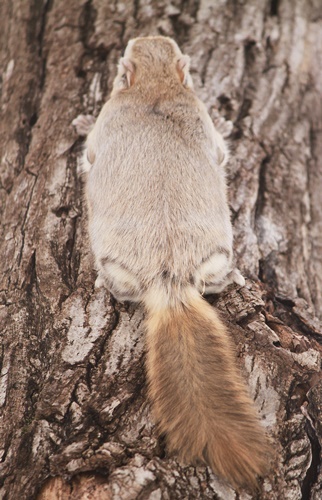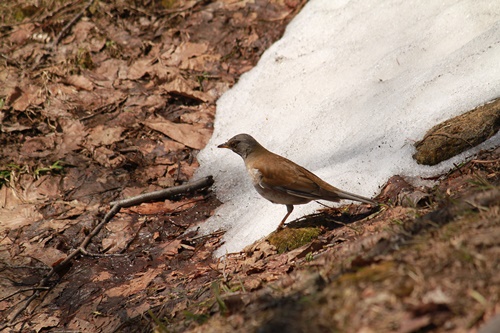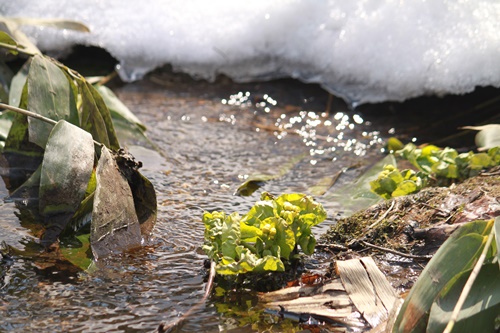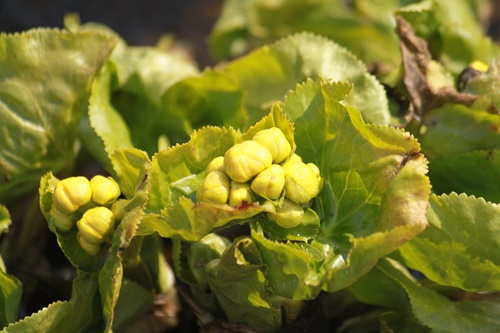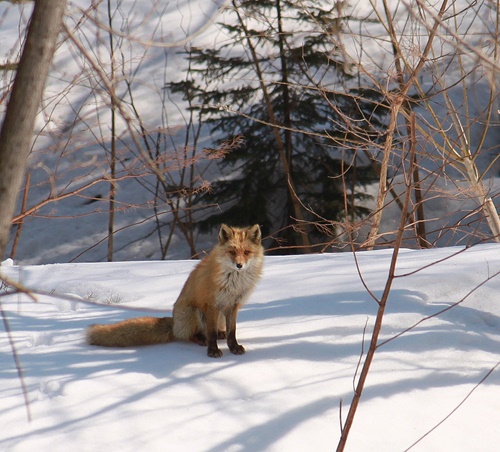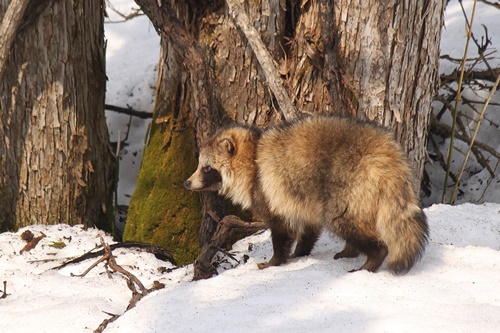For the first time in a while, it has been warm since daybreak.
I seized the opportunity to take an early-morning walk.
A lot of the snow has melted. In the nearby forest, walking on snowshoes is no longer possible, although walking in regular shoes is still difficult.
Determining that it would be impossible to go far into the forest, I decided to observe the birds nearby. But then I saw a Pteromys volans orii pressed up against the side of a tree. It had become so much a part of the tree’s appearance that at first I did not even notice it.
It looked just like a badge.
I looked all around but unfortunately could not locate its nest.
Finding myself surprised to be reminded of how close the animals are, I looked all around to see if there were any large animal tracks on the ground. It’s becoming that time of year when going out alone in the mornings and evenings is not such a good idea.
Photo: A Pteromys volans orii Apr. 24
I seized the opportunity to take an early-morning walk.
A lot of the snow has melted. In the nearby forest, walking on snowshoes is no longer possible, although walking in regular shoes is still difficult.
Determining that it would be impossible to go far into the forest, I decided to observe the birds nearby. But then I saw a Pteromys volans orii pressed up against the side of a tree. It had become so much a part of the tree’s appearance that at first I did not even notice it.
It looked just like a badge.
I looked all around but unfortunately could not locate its nest.
Finding myself surprised to be reminded of how close the animals are, I looked all around to see if there were any large animal tracks on the ground. It’s becoming that time of year when going out alone in the mornings and evenings is not such a good idea.
Photo: A Pteromys volans orii Apr. 24
